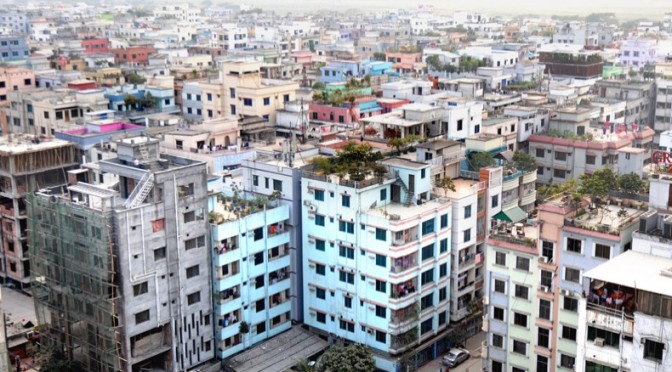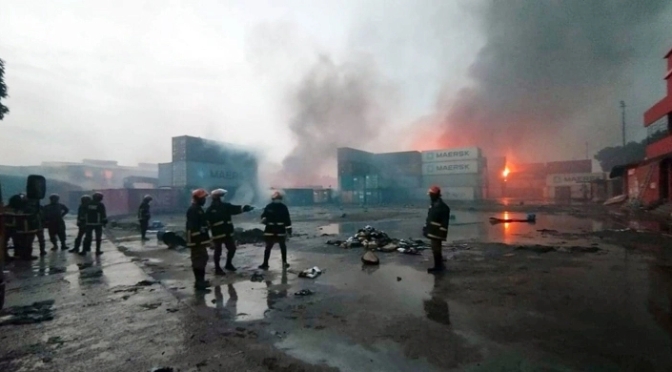Dhaka North City Corporation mayor Md Atiqul Islam is accused of abusing his position to help a number of private organisations connected to him, his family, or close associates do profitable business, shaping careers, gaining fame using the city corporation taking the advantages illegally.
The mayor’s personal link is found with at least four private organisations—Shakti Foundation, Oikko Foundation, Obhoyaronno, and BD Clean—that are working with DNCC.
Atiq allegedly favoured the organisations without following rules, funded them, and facilitated them to get funding from other local and international organisations.
Atiq admitted the involvement of his own family members in the organisations and claimed that he was doing it to promote good jobs in society.
Of the organisations, the Shakti Foundation was founded by Atiq’s sister-in-law, Humaira Islam, who is also the executive director of the foundation.
Atiq’s nephew, Imran Ahmed, works as deputy executive director at the foundation, while the mayor’s daughter, Bushra Afreen, is a management executive.
Imran, the son of Atiq’s elder brother and former chief justice Md Tafazzul Islam, was appointed as one of the five advisers to the mayor on November 9, 2022.
While four other advisers—Centre for Urban Studies chairman Professor Nazrul Islam, secretary of the centre Salma A Shafi, green activist and architect Iqbal Habib, and Jahangirnagar University professor and entomologist Kabirul Bashar—are experts in their respective fields, Imran holds no strong portfolio.
His daughter Bushra was appointed as chief heat officer for Dhaka, the first such appointment for any Asian city, by the US-based Arsht-Rock Foundation.
The foundation engaged DNCC’s partner organisation, Shakti Foundation, to select the candidate.
‘Imran and Bushra are not getting any coins from the city corporation,’ Atiq said, adding that he did not see any problem if the mayor took advice from any unpaid one.
Shakti officials admitted receiving funds from the MetLife Foundation, the HSBC Bank Foundation, and the Arsht-Rockefeller Foundation for their work with DNCC.
At the 19th board meeting of the city corporation held in January 2023, Atiq approved an agreement with Shakti for tree plantations in Dhaka.
Shakti is implementing Muktir Sabujayon and Nature-Based solution projects on behalf of DNCC. The city authority recently awarded Shakti another green project titled the Nagar Sabujayan Project.
Shakti is the only organisation working with DNCC in such a capacity, confirmed DNCC officials.
Metlife Foundation donated Shakti Tk 45 lakh for the Muktir Sabujayon project, under which the foundation renovated the Jallad Khana Memorial in Mirpur.
MetLife Foundation spokesperson Saif Rahman said that they needed an implementation partner capable of doing the job.
‘Shakti is our partner to implement the projects in the DNCC area,’ he said.
Mayor Atiq himself holds the executive president post of the Oikko Foundation, an SME organisation entrusted with organising holiday markets on the footpaths in the capital’s Agargaon.
The foundation was awarded the work without any tender or legal procedure.
The foundation is profiting Tk 3,000 daily from each entrepreneur who displays products on the city footpath.
DNCC chief executive officer, Md Selim Reza, said that the holiday market was running on a pilot basis without any agreement with the Oikko Foundation.
‘We want to get ideas from this pilot project so that in the future we can do better management of more holiday markets,’ he said, adding that the DNCC has no profit share or monitoring of the organisation.
Atiq admitted his involvement with Oikko but claimed he was not taking any benefits.
Atiq’s daughter Bushra is also a policy consultant at the animal rights organisation Obhoyaronno, which runs commercial activities using DNCC facilities.
Obhoyaronno is charging Tk 1,500 for neutering a dog, Tk 2,000 for spaying, Tk 300 for rabies vaccination, and Tk 1,200 for Nobivac vaccination.
DNCC public health officer Mohammad Luthfor Rahman confirmed that they have no formal agreement with Obhoyaronno to use public facilities under the city corporation.
He refused to take further questions on the matter, saying that the mayor was personally dealing with Obhoyaronno.
Atiq said his daughter was involved with Obhoyaronno as an animal lover.
Responding to an email from New Age, Obhoyaronno said that Bushra’s affiliation with the organisation had started ‘long before she became the mayor’s daughter.’
Obhoyaronno said that they had received approximately $85,000 in donations from US-based Humane Society International, FAO, and Dog Trust UK in the past five years.
Dhaka’s other city corporation, Dhaka South City Corporation’s acting chief health officer, Fazle Shamsul Kabir, said that once they also had an agreement with Obhoyarronno, they did not renew it after 2018.
‘They did nothing for dogs but took foreign donations,’ he said.
According to the annual report of Dogs Trust Worldwide, they funded Obhoyaronno with $44,622 in 2020 and $6,132 in 2019.
The Humane Society International website reported that since 2016, the organisation has funded Obhoyaronno approximately $200,000.
BD Clean, a platform of youths founded by Mayor Atiq’s assistant private secretary Farid Uddin, received at least Tk 22 lakh as a grant in three instalments between 2021 and 2022 for cleaning the city.
DNCC officials said that Farid used his position as APS of the mayor to divert public money to his own organisation.
Atiq said he decided to support BD Clean as they were doing a good job.
‘I don’t see any problem with it,’ he said.
Transparency International Bangladesh executive director Iftekharuzzaman said these are gross violations of the mayor’s oath that he had taken as a public representative and examples of nepotism and conflict of interest.
‘Mayor is not for his men but rather for the people of the city,’ he said.
Atiq was elected as Dhaka mayor in February 2019 following the death of Anisul Huq. During his re-election campaign in 2020, he used the hashtag ‘AtiqforDhaka.’
The mayor has been misusing his power to favour his relatives, family members, and loved ones. These are examples of nepotism and favouritism, which are by definition corruption,’ said Iftekharuzzaman.
Published on New Age






